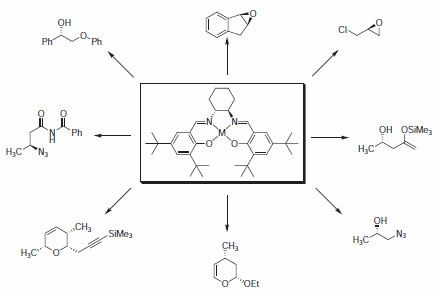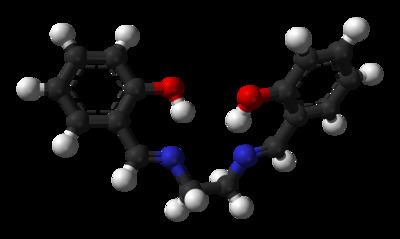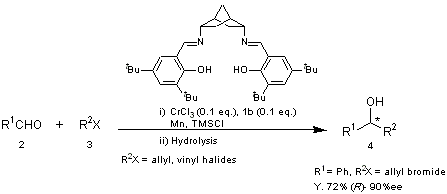Formula C16H16N2O2 | Appearance yellow solid | |
 | ||
Salen is the abbreviation for a popular chelating ligand used in coordination chemistry and homogeneous catalysis. The name salen is a contraction for salicylaldehyde and ethylenediamine. The ligand is a bright yellow micaceous solid that is soluble in polar organic solvents.
Contents

Nomenclature

The diphenol H2salen is the conjugate acid of the ligand that logically is salen2−. But the terminology is used loosely. As an anionic tetradendate ligand, salen2− resembles tetradentate ligands including those that are macrocyclic, such as porphyrinate, corrin, bis(dimethylglyoximate), and some Schiff bases.
Preparation

H2salen is commercially available. It was first prepared by Pfeiffer. It is often generated in situ followed by the addition of the metal salt, but the ligand is also easily prepared as a pure organic compound by the condensation of ethylenediamine and salicylaldehyde.
Acacen ligands

Related to salen ligands but based on non-aromatic precursors are the acacen ligands. These dianionic tetradentate ligands are often derived from the condensation of ketoaldehyde equivalents and diamines. The name acacen derives from the abbreviation for acetylacetone and ethylenediamine.

